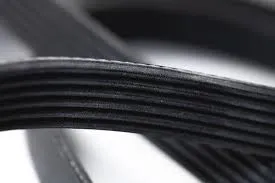- Arabic
- French
- Russian
- Spanish
- Portuguese
- Turkish
- Armenian
- English
- Albanian
- Amharic
- Azerbaijani
- Basque
- Belarusian
- Bengali
- Bosnian
- Bulgarian
- Catalan
- Cebuano
- Corsican
- Croatian
- Czech
- Danish
- Dutch
- Afrikaans
- Esperanto
- Estonian
- Finnish
- Frisian
- Galician
- Georgian
- German
- Greek
- Gujarati
- Haitian Creole
- hausa
- hawaiian
- Hebrew
- Hindi
- Miao
- Hungarian
- Icelandic
- igbo
- Indonesian
- irish
- Italian
- Japanese
- Javanese
- Kannada
- kazakh
- Khmer
- Rwandese
- Korean
- Kurdish
- Kyrgyz
- Lao
- Latin
- Latvian
- Lithuanian
- Luxembourgish
- Macedonian
- Malgashi
- Malay
- Malayalam
- Maltese
- Maori
- Marathi
- Mongolian
- Myanmar
- Nepali
- Norwegian
- Norwegian
- Occitan
- Pashto
- Persian
- Polish
- Punjabi
- Romanian
- Samoan
- Scottish Gaelic
- Serbian
- Sesotho
- Shona
- Sindhi
- Sinhala
- Slovak
- Slovenian
- Somali
- Sundanese
- Swahili
- Swedish
- Tagalog
- Tajik
- Tamil
- Tatar
- Telugu
- Thai
- Turkmen
- Ukrainian
- Urdu
- Uighur
- Uzbek
- Vietnamese
- Welsh
- Bantu
- Yiddish
- Yoruba
- Zulu
ડીસેમ્બર . 10, 2024 18:34 Back to list
Understanding the Principles and Applications of V-Belt Drive Systems in Mechanical Engineering
Understanding V-Belt Transmission An Overview
V-belt transmission systems have long been a fundamental aspect of mechanical engineering, playing a critical role in various applications ranging from automotive to industrial machinery. These systems utilize v-belts to transfer power and motion between different components, ensuring efficient operation in various machines. This article aims to delve into the principles, advantages, applications, and maintenance aspects of V-belt transmissions.
What is a V-Belt?
A V-belt is a type of flexible machine element, usually made of rubber or synthetic material, characterized by its trapezoidal cross-section. This unique shape allows the belt to fit snugly in the pulley grooves, which enhances grip and minimizes slippage during operation. V-belts are typically used in pairs or even in multiple configurations to increase the power transmission capacity and efficiency.
How V-Belt Transmission Works
V-belt transmission operates on the principle of friction between the belt and pulleys. When the prime mover, such as an electric motor, turns the driving pulley, the belt rotates around it. Due to the wedge shape of the V-belt, a significant amount of friction is generated, allowing the belt to transmit power to the driven pulley. This system can effectively transfer rotational motion from one axis to another, making it invaluable in various mechanical setups.
Advantages of V-Belt Transmission
1. Efficiency V-belt transmissions are known for their high efficiency, often achieving power transfer rates of up to 95%. This means less energy is wasted in the form of heat, making them favorable for both performance and energy consumption.
2. Cost-Effectiveness V-belts themselves are relatively inexpensive compared to other power transmission systems, such as chain or gear drives. Their straightforward design also contributes to lower installation and maintenance costs.
3. Flexibility These systems can transmit power over significant distances and through various configurations, including vertical and horizontal arrangements. This versatility allows them to be employed in diverse applications.
4. Dampening Vibration V-belts have the inherent ability to dampen vibrations, leading to smoother operation of machines and reduced wear on components. This characteristic is particularly beneficial in settings where noise and mechanical stress are of concern.
5. Ease of Installation and Maintenance V-belt systems are easier to install and maintain compared to other mechanical systems. Replacing a worn-out belt is a straightforward process that does not require specialized tools or extensive downtime.
Applications of V-Belt Transmission
v belt transmission

V-belt transmissions are found in numerous industrial and commercial applications. Some common usages include
- Automotive Industry Used to drive accessories such as alternators, power steering pumps, and air conditioning compressors.
- Manufacturing Equipment Employed in conveyor systems, centrifuges, and milling machines, providing a reliable means of power transfer.
- Agriculture Agricultural machinery such as tractors and combines use V-belt systems to drive various implements and attachments.
- Home Appliances Devices like washing machines and refrigerators utilize V-belt transmissions to facilitate their operations.
Maintenance of V-Belt Transmission
To ensure the longevity and efficiency of V-belt systems, regular maintenance is crucial. Here are some best practices
- Regular Inspection Periodically check for signs of wear, such as fraying or cracking of the belt. Operational noise or vibrations can also indicate potential issues.
- Tension Adjustment Proper tension is critical for optimal performance. A belt that is too loose may slip, while one that is too tight can cause excessive wear on bearings and shafts.
- Alignment Check Ensure that pulleys are properly aligned. Misalignment can lead to uneven wear on the belt and reduced efficiency.
- Replacement Timely replacement of worn-out belts is essential to avoid unexpected breakdowns and extend the overall lifespan of the system.
Conclusion
V-belt transmission systems are a vital component in various mechanical applications, offering a blend of efficiency, flexibility, and cost-effectiveness. By understanding their function, advantages, and maintenance practices, users can ensure they leverage the full potential of V-belt systems in their applications. Proper attention to these systems will lead to enhanced performance and prolonged service life, making them an indispensable part of modern engineering solutions.
-
Korean Auto Parts Timing Belt 24312-37500 For Hyundai/Kia
NewsMar.07,2025
-
7PK2300 90916-T2024 RIBBED BELT POLY V BELT PK BELT
NewsMar.07,2025
-
Chinese Auto Belt Factory 310-2M-22 For BMW/Mercedes-Benz
NewsMar.07,2025
-
Chinese Auto Belt Factory 310-2M-22 For BMW/Mercedes-Benz
NewsMar.07,2025
-
90916-02660 PK Belt 6PK1680 For Toyota
NewsMar.07,2025
-
drive belt serpentine belt
NewsMar.07,2025

